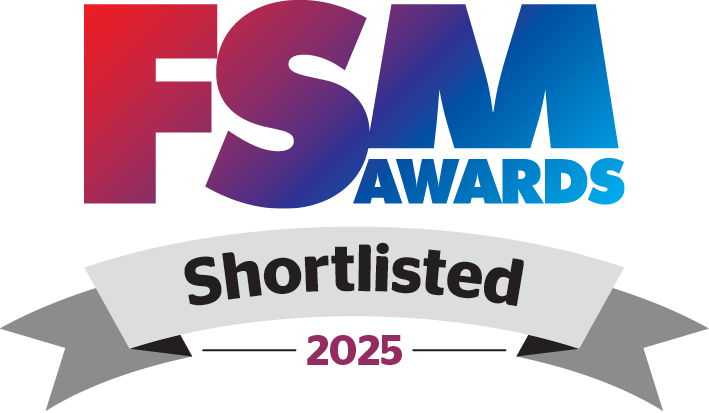Health & Safety: Work Related Stress from a Compliance Perspective
(1)(1)(1)(2)_1000.jpg)
Many see stress management as more of a reactive process. It’s important that your focus shifts to more of a proactive approach. Health & Safety was put in place, with a main aim of preventing harm. It often goes by the wayside when it comes to prevention of stress.
Prevention - It all starts with your policy
Your policy should begin with a Statement of Intent to clearly set out how you will comply with the legal requirements for managing work related stress and incorporate the moral reasons why we want our staff to be protected. This will be signed by the head teacher and relevant managers. It’s recommended to have a Standalone Stress Management policy, so this has its own focus. Not just one or two paragraphs that form part of you “well-being policy, or any other document.
The HSE states that work related stress is foreseeable risk that must be assessed and suitably managed. Your policy is a key part to this.
Ensure appropriate Risk Assessments are in place
The Management of Health & Safety at Work Regulations 1999 states that employers are required to carry out a suitable and sufficient assessment of the health and safety risks to which their employees are exposed whilst they are at work. This includes the requirement to assess the risk of stress-related ill health arising from work activities.
The above includes anyone you are bringing onto your site, for example volunteers, temporary staff, etc. Ensure you have done a Risk Assessment for everyone; you know where your Risk Assessments come from and why they are a legal requirement.
There are also cases where you would have to fill in an individual Risk Assessment for a member of staff. An example of this would be with a pregnant member of staff.
The above policy is used to set out all the detail of how you will manage work related stress and support staff and should include the following when you do your Risk Assessments:
- Identify Roles and responsibilities: This should include Governors, Trustees, Head Teachers, SLT and line managers who will directly support staff
- Identify any training needs: See what training each of the allocated responsibilities across the management teams and general staff might need.
- Identify your management processes – The support framework, risk assessment process, communication systems, external support and wellbeing provisions that you have in place.
Training, training and training
A great way to embed any policies and promote a pro-active Stress Management Culture in your organisation is by training.
Here is an overview of recommended training:
Head Teachers, Governors and Trustees –Management level training for a holistic approach for stress management within your school, as well as knowing how to support the management teams.
Line Managers – Instructor led training to provide the tools to support staff groups or individuals at a local level.
All staff – Stress management training to show staff what to be aware of, signs of stress and internal / external support systems that can assist. E.g. eLearning courses.
Mental Health First Aiders – A specific course for nominated members of staff to be a direct contact for advice on managing wellbeing, stress and mental health. These staff members are not councillors but assist with supporting staff on a personal level for conversation, sign posting to professional services or self-help resources. They are trained to recognise signs of escalation in mental health crisis.
Important to think of your line managers, head teachers and SLT – they are supporting staff, but who will support them? What arrangements do you have to ensure the Head Teacher can unload and refocus in a support meeting?
Plan, Do, Check, Act
The below approach might be a good overall strategy to implement for work related stress management. It also treats stress management as an integral part of pro-active health & safety management.
Plan:
- Think about where you are now and where you need to be.
- Decide what you want to achieve, who will be responsible for what, how you will achieve your aims, and how you will measure your success. You may need to write down this policy and your plan to deliver it.
- Decide how you will measure stress and identify potential red flags.
- Co-operate with anyone who shares your workplace and co-ordinate plans with them.
- Remember to plan for changes and identify any specific legal requirements that apply to you.
Do:
- Identify your risk profile - Assess the risks, identify what could cause stress in the workplace, who it could affect and how, and what you will do to manage this. Along with this, decide what the priorities are and identify the biggest triggers.
- Organise your activities to deliver your plans - In particular, aim to involve members of staff and communicate, so that everyone is clear on what is expected from them and can discuss potential stumbling blocks. Also provide adequate resources, including competent advice where needed, training and welfare check-ins.
- Implement your plan - Decide on the preventive and protective strategies needed and put them in place. Provide the right staff with the “tools” to get this done (again, training, advice, etc).
Check:
- Measure the outcomes - Make sure that your plans have been implemented, as 'paperwork' on its own does not mean anything if the plans were not actually carried out. Also assess how well the potential stressors are being managed and if you are achieving what you set out.
Act:
- Review - Learn from past situations, number of employees off sick for stress, and even relevant experience and parties, including from other schools. Also revisit strategies, policy documents and risk assessments to see if they need updating
- Take action on lessons learned
If you require any support in any of these steps, or would like to talk to someone surrounding some support for your school please do not hesitate to call us on 0203 326 9174 or email tara.jones@judicium.com.
Related content
.png)
This blog is based on Judicium’s Health & Safety and SEND session on 26th November with resident expert India Cottenden
.png)
This blog is based on Judicium’s Food Safety Sofa session on 12th November with resident experts Sue Roberts and Tracey Killick

This blog is based on Judicium’s Health and Safety ‘Sofa Session’ on the 15th of October, with our resident expert Mike Wright.

This prestigious award celebrates our commitment to delivering expert, education-specific Health & Safety support that lifts the burden for school teams while raising safety standards across the sector.

This blog is based on Judicium’s Health and Safety ‘Sofa Session’ from 18th June, led by resident expert , Mike Wright, CMIOSH. This session focuses on the control of substances hazardous to health (COSHH) and their relevance in school settings, how assessments should be undertaken and what staff could be at risk.

Discover why Judicium has been shortlisted for Fire Safety Consultancy of the Year at the 2025 FSM Awards, recognising our expert support for schools and trusts in delivering sector-specific, compliant, and practical fire safety solutions.

Sofa Sessions | H&S